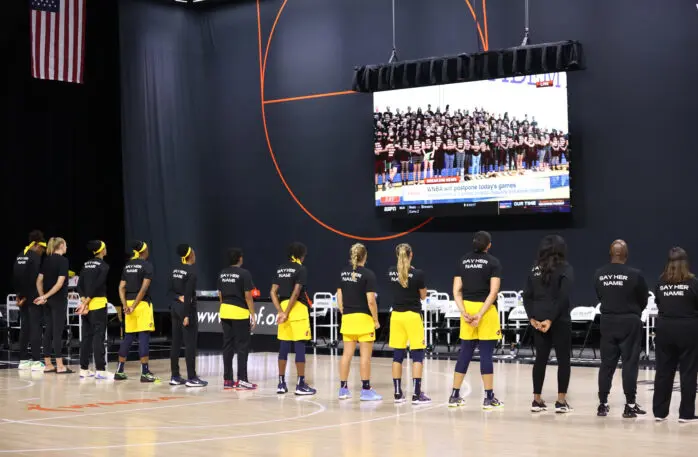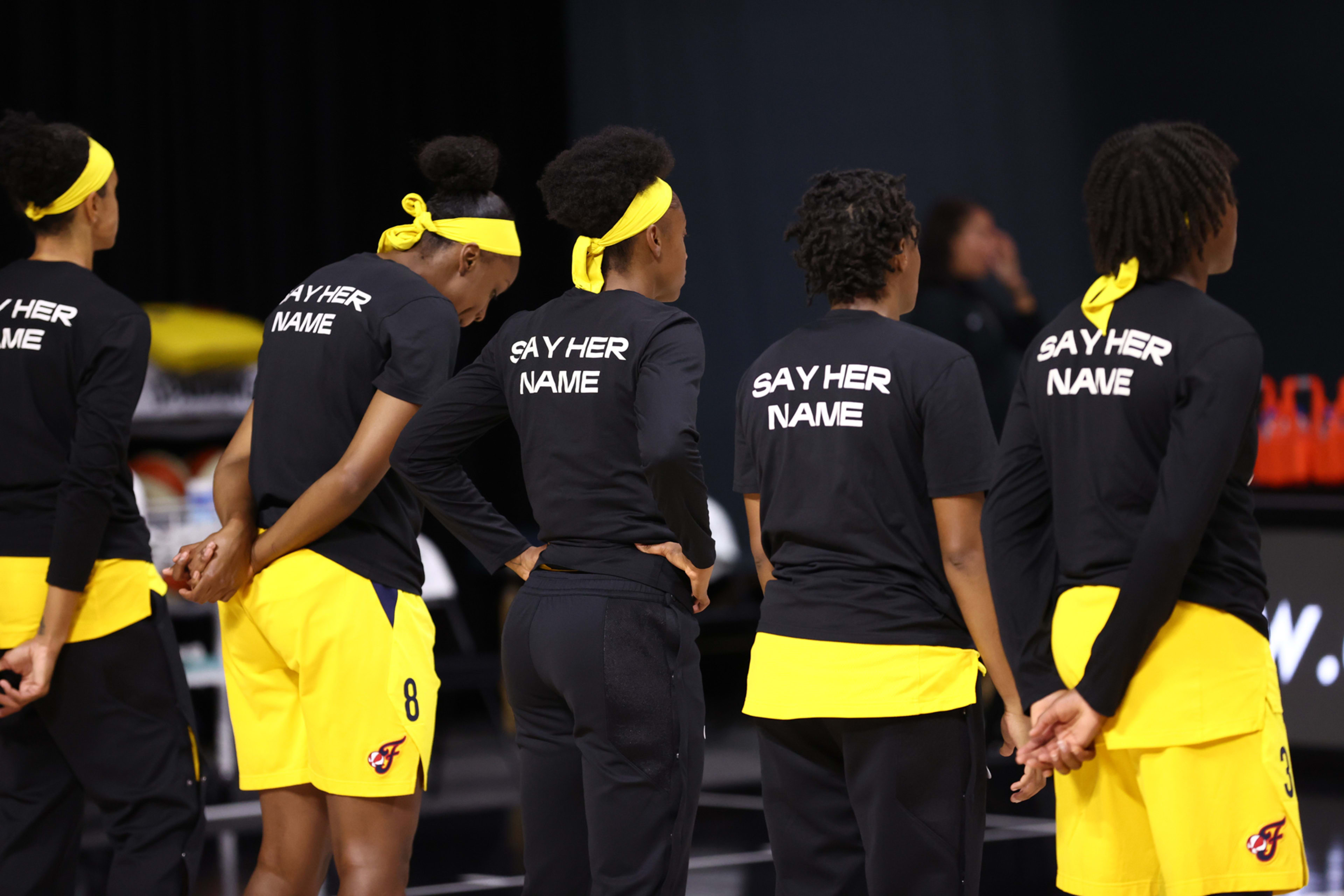After Jantel Lavender got injured in 2019, she wasn’t sure what it would mean for her career. Lavender was a veteran of the WNBA, in her early thirties, and on the cusp of her 10th season. “In the WNBA, that’s considered old,” she says.
Lavender ended up sitting out the 2020 season to recover from a surgery to address her injury. “I’m sitting here with this broke foot—like, I could be done,” she says. “I had to face reality: This could be over.” Then, as if by “divine intervention,” Lavender got traded to the Indiana Fever, the team she had been eyeing for years. “I feel like I was kind of on this downward spiral,” she says. “And then somebody sees that you can still do something in this league.”
Joining the Fever this season comes with another perk: Lavender is now in the inaugural cohort of Athlete to Advocate, a five-week professional certificate that kicks off its pilot program today. The program—a collaboration with Anthem and Indiana University’s Lilly Family School of Philanthropy—aims to help players become more effective advocates and better understand how to use their clout as athletes to amplify their philanthropic work.
“Because our players are leaders, and in some ways celebrities, their platform is elevated,” says Allison Barber, president and chief operating officer of the Indiana Fever. “And so what we heard from our players is: ‘We want to wear the T-shirts that promote this cause. We’re happy to be on social media and tweet about it. But what more can we do so that we actually change behavior, not just capture media attention?’ ”
The league is nearly 70% Black, and its players have long spoken out against racial injustice and police brutality, with some experts arguing that it was the WNBA’s activism that helped lay the groundwork for the NBA’s much-lauded wildcat strike in 2020.

Some players chose not to play so they could focus on advocacy work. (The union also agitated for internal reform in 2020, negotiating a landmark collective bargaining agreement that significantly raised salaries for players and introduced paid maternity leave; once the pandemic hit, the union also secured full pay for players despite a shortened season.)
Barber likens the Athlete to Advocate program to the kind of support players get from specialists on and off the court to improve their game. “I realized that we have these amazing athletes who want to make a difference, but I recognized that as a franchise, there was more we could do to equip them in their passion—just like you would take a basketball player and put them with a physical trainer and a nutritionist and a sports psychologist,” Barber says. “It takes a lot of different disciplines to make them a whole athlete. We recognized that there was an opportunity to equip our players with more tools as they work to be advocates.”
The program is short, at just three hours of instruction each week, and will be conducted virtually to make it accessible to far-flung players. (Many WNBA athletes play overseas during the off-season.) Seven players from the Fever are joining the first session, along with Tamika Catchings, the general manager and VP of basketball operations for the team. The program—which will be taught by the Mays Family Institute on Diverse Philanthropy within the Lilly Family School of Philanthropy—will cover everything from the history of philanthropy to an overview of diversity, equity, and inclusion issues, with an emphasis on racial justice.
One topic Barber believes is especially important is leadership in philanthropy, which will show players how to do their due diligence before putting their name and platform behind a philanthropic organization. “There are a lot of nonprofits that talk the talk,” Barber says. “But let’s look at those nonprofits. What’s their board makeup? How much money is going to overhead versus the actual programs? So this is, I think, essential to really help teach our athletes about how to assess nonprofits.”

“We thought there would be a great three-way partnership and an ability for us to help these athletes really amplify their voice and also make a difference in the community,” says Anthem CEO Gail Boudreaux, who also happens to be a former athlete. “In our local communities, these are individuals that people look up to, and they have powerful voices.” Beyond this program, Boudreaux says Anthem also plans to partner with WNBA teams on addressing disparities in COVID-19 vaccination rates across communities of color.
Barber hopes that, following the pilot program, the Athlete to Advocate certificate will expand beyond the Fever and attract players from across the WNBA—especially those who might be thinking about their next career move. “The goal of this certificate is that it does help our players not only learn how to be advocates today,” she says, “but it starts to develop them for opportunities in the future, whether it’s for their own foundation or work they might want to do in the community.”
After all, playing in the WNBA is inherently transient: According to Barber, the average WNBA player has a tenure of just three and a half years. Since many WNBA athletes play overseas between seasons, they’re also at higher risk of getting injured. “I think all WNBA players should actively be thinking about what they’re going to do after basketball, because this does not last forever,” Lavender says. “I want to dedicate my life to bringing change to people and bringing awareness—being a voice for the voiceless.”
Recognize your brand’s excellence by applying to this year’s Brands That Matter Awards before the early-rate deadline, May 3.
